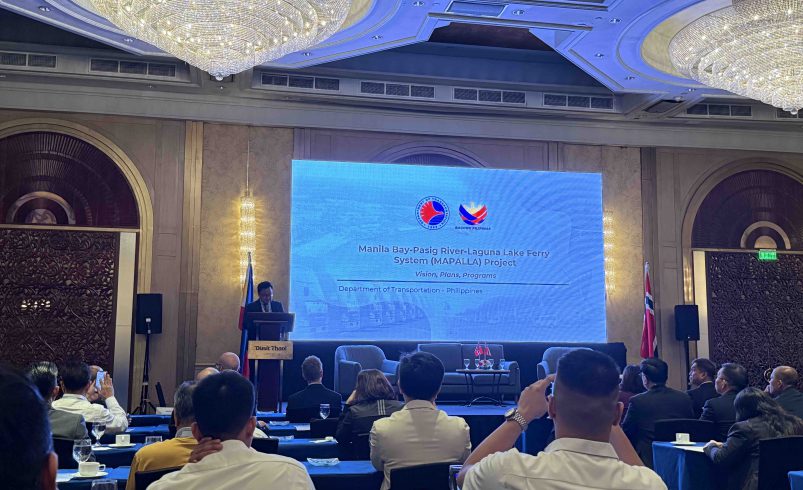DOTr launches PHP 32B plan for Metro Manila electric ferry network
- November 5, 2025
- 0

The Department of Transportation (DOTr) has unveiled details of its proposed Manila Bay–Pasig River–Laguna Lake (MAPALLA) Electric Ferry System, a PHP 32-billion initiative designed to connect major waterways across Metro Manila and nearby regions through a modern, fully electric ferry network.
Speaking at the Norway–Philippines Electric Ferries Conference 2025, DOTr Chief Communications Development Officer John Dayao said the project aims to provide an environmentally sustainable, high-capacity, and people-centered transport system that can help ease Metro Manila’s congestion while supporting the country’s shift to low-carbon mobility.
Dayao explained that the MAPALLA system will consist of four interconnected routes covering the
The first phase, which covers the Pasig and Marikina rivers, is targeted for construction from 2027 to 2029, with 75 electric vessels to be deployed. The second phase, expanding to Manila Bay and Laguna de Bay, is expected to begin between 2033 and 2035, eventually bringing the total fleet to 101 vessels.
“All vessels are envisioned to be fully electric, designed for sustainability, safety, and resilience,” Dayao said. “The system will run at 7.5-minute intervals during peak hours and will include amenities such as Wi-Fi, accessible facilities for persons with disabilities, and gender-responsive designs.”
He added that the project supports several national priorities, including the Pasig Bigyan Buhay Muli initiative and the Maritime Industry Development Plan, while complementing the Philippine Ports Authority’s and Metro Manila Development Aut
Dayao emphasized that the MAPALLA project is more than a transport system—it is a symbol of renewal and collaboration that can transform Metro Manila’s waterways into safe, inclusive, and efficient transport corridors. The project also aligns with the government’s Inter-Island Ferry Decarbonization Program, which pilots low- and zero-emission vessel technologies across the country.
Together, these initiatives aim to contribute to the Philippines’ broader net-zero and green-transport goals, while redefining river travel as a viable and sustainable alternative within the nation’s most congested metropolis.
How can successful global models like Norway’s electric ferries help accelerate the Philippines’ own shift to sustainable, people-centered mobility?
Follow Power Philippines on Facebook and LinkedIn or join our Viber community for more updates.